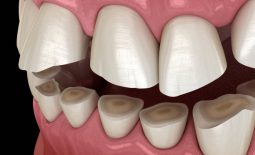New technology is great, but here’s where the experts get it wrong
In 1804 a man by the name of Richard Trevithick built the world’s first fully-functional steam locomotive, ushering in the era of mass transit for people and goods. Ninety-nine years later the Wright Brothers were “First in Flight” with the launch of their flying machine, taking the world of mass transit across oceans and continents in record time.
Ever since the airplane came on the scene it was certainly “newer” than the locomotive, and I think anyone would agree modern airplanes are more “technologically advanced” as well. Terms like “state-of-the-art” and “high-tech” can also be used. So if modern airplanes are so much superior to the locomotive, the obvious question is why are we still using trains?
The reality is that trains still do an important job in our society and they do it very well. Just because a newer technology comes along doesn’t mean we automatically abandon previous one. When it comes to dental care, there are older technologies that are tried-and-true, newer technologies just being introduced, and future technologies to be anticipated. An example of an older technology would be the commonplace dental crown. While the materials have changed (ceramics, bonding agents) over the years, the basic principle is the same as it was decades ago. An example of a newer technology is the dental implant, a titanium post that is placed in the jaw to replace a missing tooth. I’m sure when dental implants first came on the scene some of the “experts” forecast the end of dental crowns. But the truth is that implants, while very reliable and often the preferred treatment option, are simply not appropriate for every person and every situation. The reality is that crowns aren’t going anywhere.
One possible future technology often discussed is the ability to grow a new tooth via stem cells. Obviously any time the future is discussed we can only guess as to when it will be available and how it will work. Given that, there are two predictions I can make rather confidently: first, growing a new tooth from stem cells implanted in your jaw will take at least a year (total treatment time), possibly much longer, and second, the total cost of this procedure will be well in excess of a crown or an implant.
If and when growing new teeth becomes a reality, it will be an exciting new option for patients to consider. But that’s all it will be, an option. Our current treatment options will remain an excellent choice, and often the preferred choice, as we continue to improve upon them with better materials and protocols. The future of dentistry is exciting, but the dentistry of today will continue to serve us very well for years to come.


